As I started trying to explain WHAT candida is, how it affects your body, how to get rid of it, etc. I came across this article that explains it all PERFECTLY! Even if you don't have any health issues, please read the first few paragraphs and educate yourself.
READ PART 1 HERE to understand WHY I am going on the Candida Diet.
Candida is an often overlooked cause of a wide variety of symptoms and cond
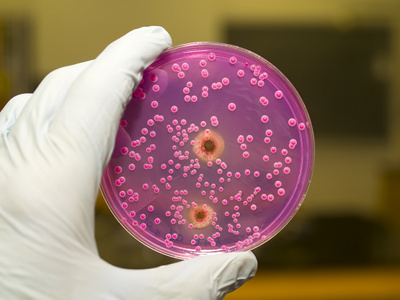
itions that persistently plague people today. Who would ever imagine that digestive disturbances, chronic fatigue, skin rashes, brain fog, food cravings, depression, and the inability to lose weight (to name a few) could all stem from a single microscopic organism that commonly lives within each of us?
Since an overgrowth of this yeast/fungal-type organism can affect every body system and produce a multitude of seemingly unrelated symptoms, it is little wonder that Candida persists unrecognized for many years. It is estimated that close to a million Americans suffer from yeast-related problems with 70 percent of the cases occurring in women. Of course, it is difficult to know the true number since so many cases are either undiagnosed or misdiagnosed and attributed to other conditions.
Just what is Candida?
Candida albicans is the official name of a family of fungi that is one of many microorganisms found in our digestive system. This destructive, parasitic-type fungus starts out as a unicellular yeast and mutates into a fast growing fu
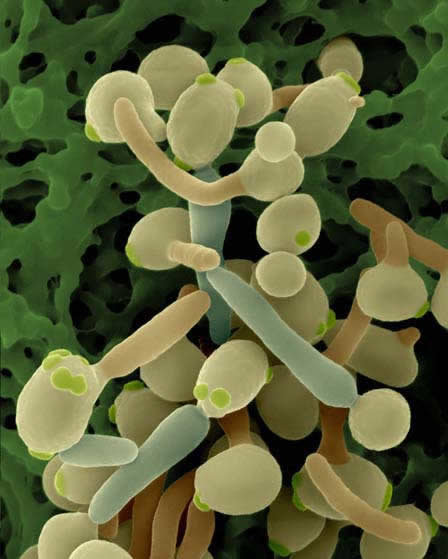
ngus that feeds off the nutrients in the digestive system and bloodstream of its host.
All of us have candida colonies within the mucosal lining of our intestinal tract and, to a lesser degree, in parts of our reproductive and respiratory systems, as well as on our skin. When there are normal healthy populations of beneficial bacteria, the candida organism is outnumbered approximately a million to one and lives in us with no harmful effects. As long as the bacteria in the intestines remain in balance, the candida yeast is held in check since it cannot begin to compete for the nutrients needed to grow rapidly amidst a huge population of good bacteria.
However, if factors disturb the delicate balance of intestinal flora, this opportunistic organism can grow out of control and attempt to invade and colonize all types of bodily tissues. Candidiasis is the term used to describe the condition produced in the body when there are more harmful bacteria and yeast than beneficial intestinal flora. Though sometimes called the “Yeast Syndrome,” it is more commonly just referred to as “Candida.”
Factors that Promote the Overgrowth of Candida
Both health and disease are all about balance. In this modern age, a number of factors upset the balance of good bacteria designed to protect our bodies from an overgrowth of harmful organisms. The most common ones that allow candida to grow out of control are:
- Diets high in sugars, starches and refined grains. Although a person’s diet does not cause
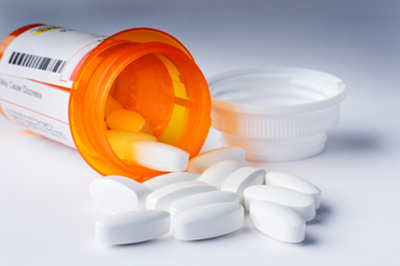 Candida, sugars and starches in the diet (that rapidly break down into sugar in the digestive process) fuel the overgrowth of this yeast/fungal organism.
Candida, sugars and starches in the diet (that rapidly break down into sugar in the digestive process) fuel the overgrowth of this yeast/fungal organism.
- Acidic pH – the consumption of high acid foods and beverages and poor digestion of foods creates an acidic pH in the body, which provides a breeding ground for yeast and fungus to flourish.
- Antibiotics – taking antibiotics kills all the good bacteria along with the bad.
- Steroid drugs
- Oral Contraceptives
- Antacids
- Mold and mildew
- Chlorinated water
- Constant stress and/or lack of sleep
- Impaired immune system
Symptoms and Conditions Candida Can Cause
The signs and symptoms of Candida are so numerous and varied that it is often mistaken for other conditions. Since many of these symptoms are factors in other health issues, Candida is not always suspected. However, people who continue to experience these symptoms and cannot figure out what is wrong with them, or who do not respond to normal treatments, should consider the possibility that Candida is the culprit. Listed below are just some of the more commonly experienced symptoms:
- Fatigue and general malaise (run-down and “sick all over” feeling)
- Cravings for sweets, bread or alcohol
- Brain fog – ("spaced-out" feeling - decreased ability to concentrate)
- Mood swings and depression
- Digestive disturbances – (gas, abdominal bloating, indigestion, etc.)
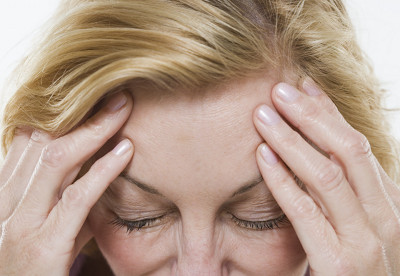
- Constipation and/or diarrhea
- Weight gain and inability to lose weight (Candida adversely affects metabolism and interferes with many hormones and nutrients needed to enable the body to burn fat)
- Feeling faint, lightheaded or dizzy
- Frequent headaches
- Numbness or tingling in the extremities
- White coating on the tongue
- Itching – skin rashes
- Frequent sore throats or sinus infections
- Sensitivities to chemicals, smells, mold or dampness
- Food allergies
- Interrupted sleep
- Reduced sex drive or sexual dysfunction
Most conventional doctors restrict their diagnosis of a candida-type infection to conditions that are more clearly connected with a growth of yeast such as vaginal yeast infections, thrush, diaper rash and some types of skin and nail infections. This is because definitive medical testing and long-term prescription drugs do not currently exist for treating systemic Candidiasis. Short-term infections are often treated with anti-fungal preparations or medications th
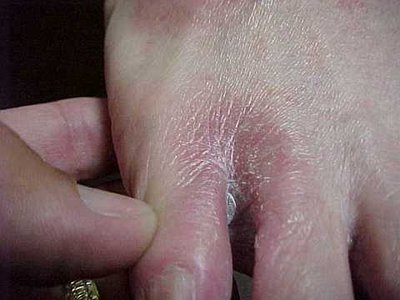
at may take care of the symptoms but do not thoroughly address the root causes of the yeast overgrowth.
Some other health conditions that are thought to arise from an overgrowth of Candida are:
- Chronic fatigue
- Fibromyalgia
- Immune system malfunction
- Recurrent infections
- Infertility
- Allergies/Hay Fever/Asthma
- Psoriasis/Eczema and other skin conditions
Ways Candida Can Impact the Entire Body
Leaky Gut Syndrome
As Candida mutates into a fungal form, it grows roots and secretes acids and enzymes to break down complex nutrients it cannot easily absorb. Over 70 known toxins are produced as by-products of the digestive process of these organisms. The action of its penetrating roots combined with the effects of these toxic secretions creates tiny perforations in the mucus lining of the intestines, which leads to the development of “leaky gut” syndrome. This condition allows toxins and incompletely digested food particles to leak into the bloodstream where it can travel to other parts of the body and cause
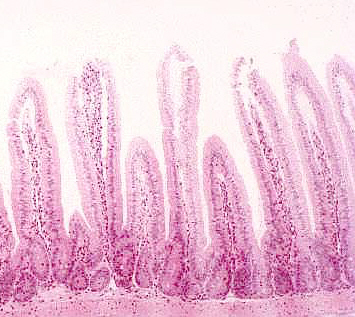
systemic (system-wide) effects. Once other parts of the body are exposed to the toxic effects of Candidiasis, a person’s health may be negatively impacted in numerous ways. Although it is somewhat rare, Candida that enters the bloodstream can even develop into a life-threatening disease known as Candidemia. This condition is the fourth most common bloodstream infection among hospitalized patients in the United States.
Weakened Immune System
The body’s defense system is weakened by continually having to respond to antigens in the form of toxins or partially digested food molecules that escape into the bloodstream through a leaky gut brought on through the effects of Candida. Unfortunately, the weaker the immune system becomes, the higher the tolerance it has to the yeast, which allows the yeast colonies to continue to grow and release more toxins. This further impairs the immune system and perpetuates a vicious cycle. In addition, research shows that Candida interferes with suppressor cells that stop the body’s ability to control immune responses. Autoimmune diseases can develop more readily when insufficient levels of these cells are present.
Brain Fog
The toxins produced and released by Candida can cause any number of ill effects in the body. As Candida metabolizes sugar, it converts it to toxic alcohols called aldehydes. One of these toxins (acetaldehyde, which is closely related to formaldehyde) reacts with the neurotransmitter dopamine and can cause some people to experience depression, poor concentration or a type of brain fog. Neurotoxins produced by the waste products of Candida are also thought to deplete levels of serotonin in the brain. These are just a few examples of how damaging the effects in the body can be from Candida produced toxins.
Solutions for Controlling Candida
With the proper steps, Candida can be controlled and put back into proper balance within the body. Although candida can never be completely eradicated from our systems, much can be done to rid the body of the overgrowth of this opportunistic organism and its harmful effects. A multi-faceted approach that includes addressing the root causes is necessary to reduce its presence, safely eliminate the die-off, and prevent reoccurrences by creating an environment in the body in which yeast cannot thrive. Each of the following steps is necessary for a full recovery from Candida.
1)
Eat a diet that will starve down the yeast
2)
Balance the body’s pH
3)
Take anti-fungal agents to kill the yeast
4)
Clear out the yeast as it dies off
5)
Repopulate the body with beneficial bacteria
6)
Repair the leaky gut
Step # 1 - Eat a diet that will starve down the yeast.
Dietary measures alone will not kill Candida but they can weaken it considerably so that anti-fungal agents can destroy the overgrowth. The two major categories of foods that must be avoided in order to restrict
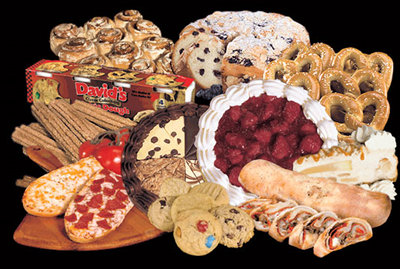
the amount of fuel available to the yeast are sugar (or anything that turns to sugar, i.e. starches and refined carbohydrates) and anything fermented or that contains yeast, mold or fungus. It must be kept in mind that sugar not only fuels the growth of Candida but it also helps it adhere to the intestinal lining as it is digested.
It is also very beneficial and strongly recommended to avoid gluten in grains and casein (milk protein) in dairy products, as common underlying allergies to these proteins may cause damage to the intestinal villi (finger-like hairs that absorb nutrients in the intestines). When food molecules are not absorbed, they produce decay in the small intestines that provides more fuel for candida to proliferate.
Though by no means a complete listing, the primary “to avoid” and “allowed” foods for a Candida diet are as follows:
To Avoid
- Sugars in all forms (including honey, molasses, syrup, sucrose, maltose, date sugar, lactose, fructose, corn syrup, etc.) Read all labels and check for grams of sugar to avoid hidden sugars in foods (such as ketchup, salad dressings and soups).
- Artificial sweeteners
- Processed Foods – canned, bottled boxed and other packaged and processed foods usually contain refined sugar
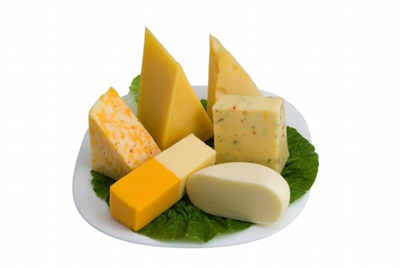 products and other hidden ingredients – additives and preservatives (such as citric acid) should be avoided
products and other hidden ingredients – additives and preservatives (such as citric acid) should be avoided
- All foods containing yeast - bakery products, commercially prepared food products, alcohol, some vitamins, etc.
- All gluten or processed grains (wheat, rye, oats, barley, spelt,) or processed grains of any kind (breads, crackers, pretzels, pastries and other baked goods – simple processed carbohydrates are basically sugar in disguise)
- Corn of any kind including popcorn, corn chips, corn meal, etc.
- Dairy products – cheese and milk contain lactose (milk sugar) that the yeast can feed on (small amounts of butter and plain yogurt are exceptions)
- Smoked, dried, cured or processed meats - includes lunchmeats, hot dogs, bacon, sausage, etc.
- Fermented foods – soy sauce, vinegar, mustard, mayonnaise, relish, pickles, etc.
- Foods with mold – mushrooms, aged cheeses, peanuts and any leftover food which can start to produce mold with age (eat foods fresh as much as possible)
- High sugar fruits – bananas, grapes, melons, oranges, peaches, pineapple, cantaloupe,
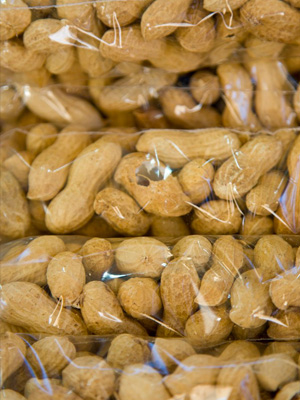 etc. as well as all dried and canned fruit
etc. as well as all dried and canned fruit
- Starchy vegetables that rapidly convert to sugar when consumed (potatoes, corn, rice, peas, cooked carrots, etc.)
- Certain types of nuts - dry roasted nuts – also, nuts without hard shells that can become moldy as well as peanuts, pistachios and cashews (high carbohydrate)
- Refined vegetable oils/bad fats - corn oil, sunflower, canola and safflower oils – also margarine, commercial peanut butter, and other partially hydrogenated and hydrogenated oils which are equivalent to trans fats
- Fruit juice – high in sugar plus most fruits used for juice contain some level of mold
- Alcoholic beverages – quickly turn to sugar – also can contain high levels of yeast contamination
- Caffeinated beverages (coffee, tea, soda and energy drinks) – caffeine prompts the liver to dump large amounts of sugar into the bloodstream
Allowed Foods
- Lean meats – unprocessed beef, chicken, turkey, fish, etc.
- Eggs (preferably organic)
- Protein powder (without added sugar)
- Non-starchy vegetables - green beans, asparagus, tomatoes, cucumbers, spinach, and other greens. Vegetables that especially inhibit the growth of candida are: cabbage, broccoli, turnips, kale, onions, garlic, (raw oni
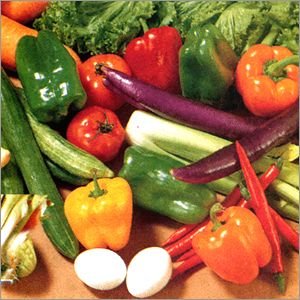 ons and garlic are very good natural anti-fungals).
ons and garlic are very good natural anti-fungals).
- Beans and Legumes – pinto, kidney, navy, garbanzo, adzuki, lentils, etc. – beans are high fiber and some have anti-fungal properties. However, they should be restricted during the first phase of the Candida diet and eaten on a limited basis due to their high carbohydrate content.
- Whole non-gluten grains - amaranth, quinoa, buckwheat rice, teff or millet (limited quantities and only in a completely unprocessed form)
- Fruits – lemons, grapefruit, freshly picked or frozen berries (grocery store “fresh” berries often become moldy and should not be used). Other fruits such as granny apples, kiwi, pears and other lower glycemic fruits may be gradually added back in after the first few weeks. When Candida is severe, it is best to avoid all forms of fruit the first two to three weeks.
- Nuts - raw nuts that come in hard shells and are lower in carbohydrates (walnuts, pecans, hazelnut, macadamia and almonds)
- Seeds – pumpkin, sesame, flax seed, sunflower, shelled hemp seeds
- Naturally fermented foods – raw sauerkraut, miso, tempeh, plain organic yogurt, kombuc
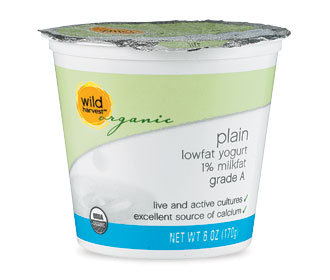 ha and unpasteurized apple cider vinegar
ha and unpasteurized apple cider vinegar
- Good oils – olive oil, coconut oil (contains caprylic acid that kills yeast), flaxseed oil and cold – pressed oils such as walnut, macadamia, avocado and grape seed
- Herbs and spices – most any culinary herbs may be used as well as mild spices
- Sweeteners - stevia (herb that cannot feed yeast as it contains no calories or sugar) and xylitol (yeast are unable to feed on it and it is also thought to kill dietary yeasts)
- Drinks – purified water with lemon, herbals teas (Pau D’Arco tea, which is sometimes called Teeheebo, has particular therapeutic benefit), green tea, and coconut water
Needless to say, the Candida diet is extremely challenging and it takes time to adjust to the lower level of carbohydrates. The cravings for sugar and high glycemic carbohydrates may be strong at first as the yeast are crying out to be fed. Because the yeasts are dying and releasing their toxic byproducts into your bloodstream, it is possible you could feel worse the first few weeks and experience tiredness, gastrointestinal symptoms, headache, joint and muscle pain, etc. The recommendations under “Clear Out the Yeast as it Dies Off” will help to minimize these symptoms. What is important is that you follow through with the program without exceptions as much as possible if you want to experience a complete recovery.
Suggested Stages for the Candida Diet
Most programs suggest starting out the first few weeks with a very strict dietary protocol for maximum effectiveness in eliminating the overgrowth of yeast.
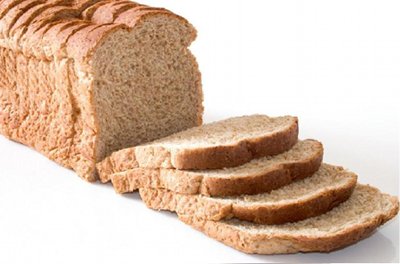
As time goes on and symptoms improve, food items such as low-sugar fruits (grapefruit, berries, etc.) and high-protein non-gluten grains (amaranth, quinoa, etc.) could gradually be added back into the diet. After symptoms have cleared up, most everything except foods high in sugar and highly processed foods may be added back.
However, it is highly recommended that foods be “reintroduced” in stages, starting with foods that contain only one ingredient (if you just added back in bread and had a reaction, you wouldn’t know if it was the yeast, eggs, sugar or wheat in the bread that was the problem). In other words, only add one portion of the “new” food a day and notice any reactions of symptoms your body may experience in response to it. If there are any reactions, give yourself another day or so before reintroducing another “new” food. Be very mindful of what you are eating and note any body symptoms or sensations linked to eating those foods. When a food causes a reaction, discontinue consumption of that food for a period of weeks and then experiment again with eating it.
How Long Should a Candida Diet be Followed?
The length of time needed to remain on the stricter Candida diet guidelines varies from individual to individual depending on the strength of their immune system and the severity of the overgrowth. Mild cases may clear up in as little as six weeks whereas more severe cases may require three to six months of faithful adherence to the diet. Those with chronic fatigue, fibromyalgia or an autoimmune disease may need to follow the diet for six months to a year. One thing is certain – the symptoms will quickly return if the diet is discontinued too soon.
Step # 2 - Balance the pH
Candida cannot grow in a pH-balanced environment. The best way to balance the pH in your body is to ensure you are eating enough alkaline-forming vegetables and fruits. Excessive consumption of refined carbohydrates, acidic drinks, meats, grains and dairy products and not enough alkaline-forming vegetables and fruits alter the pH of the body and cause the body to pull alkaline minerals from the tissues and bones to neutralize the acids and keep the blood pH in its required range. In addition, it will be extremely helpful to do your best to minimize the stress and negative emotions in your life. These factors also trigger acidic responses in the body. For more information on pH balancing, please refer to my article “
Understanding pH – Your Health is in the Balance – Pt. 2.”
Step # 3 - Take Anti-Fungal Agents to “Kill” the Yeast
The use of herbs and other supplements with anti-fungal properties that help systemically kill the yeast is the best way to dramatically diminish Candida overgrowth and allow the body to regain the right balance of microorganisms. The herbs most commonly used are:
- Caprylic acid - a long-chained fatty acid found naturally in coconut oil that is toxic to yeast, though it has no toxic side-effects in humans. Fatty acids have proven antimicrobial and antifungal compounds. Caprylic acid is
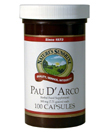 one of the most powerful natural compounds for eliminating an overgrowth of yeast.
one of the most powerful natural compounds for eliminating an overgrowth of yeast.
- Pau D'Arco –an herb taken from the bark of a tree that grows in the South American rain forest. It is said that moss, mold, or fungus will not grow within several feet of these trees. Pau d’ Arco is known for its broad-spectrum antimicrobial activity against bacteria, viruses, parasites and fungi, including candida yeast. It is also known for numerous compounds that stimulate the immune system and counter various types of infection. Pau D’Arco is available in capsules, a liquid extract and tea for internal use as well as in lotion form for external use.
- Olive Leaf Extract – a very powerful antimicrobial herb and immune stimulant with 400 percent more antioxidants than Vitamin C and double the antioxidants of green tea. Its strong anti-viral and anti-fungal properties
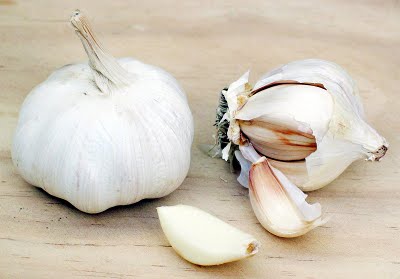 are effective against candida related conditions such as vaginal yeast infections, thrush, stubborn toe fungus, athlete's foot and jock itch.
are effective against candida related conditions such as vaginal yeast infections, thrush, stubborn toe fungus, athlete's foot and jock itch.
- Garlic - is an amazing herb known for its antimicrobial activity for all types of infections, whether bacterial, viral or fungal. Studies done on garlic's anti-fungal properties have found it to be as effective as the drug Nystatin. Garlic may be consumed in the form of fresh raw cloves that are slightly crushed or a high potency supplement that preserves the viability of the active constituent allicin may be taken (odorless garlic does not meet this criteria).
- Black walnut – is an excellent herb that possesses broad-spectrum antibacterial and antifungal properites. It is used for fungal infections (especially skin eruptions) and as a blood oxygenator and purifier.
- Oregano oil - a very potent antifungal essential oil that is recommended for use in stubborn cases of systemic fungal infections. Because it is so potent, only one drop should be used under the tongue twice a day and that for no longer than three weeks.
- Tea tree oil - has been shown to be an effective anti-fungal agent against most forms of fungus that cause infections of the skin and mucous membranes, including numerous strains of Candida albicans. Used for centuries as a plant medicine, this oil has proven capable of killing a wide variety bacterial, viral and fungal microorganisms. Tea tree oil is normally used in external applications but may be used internally in a highly diluted form of one to two drops in a glass of water.
- Biotin – is one of the water-soluble B vitamins that is obtainable from food but may also be synthesized in the body by intestinal bacteria. A biotin deficiency compromises the immune system and is common in people with Candida. Taking antibiotics, anticonvulsants or sulfa drugs can cause a deficiency of this important B vitamin.
The following formulas contain a blend of herbs and nutrients especially designed to combat and cleanse the body from Candida:
- Caprylic Acid Combination – combines the powerful yeast-fighting properties of caprylic acid with black walnut, red raspberry and elecampane (another herb that is antimicrobial, antifungal and antiparasitic). The capsules containing this herbal formula have a special coating to ensure that the contents are released in the intestinal tract for maximum effectiveness.
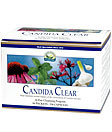
- Yeast/Fungal Detox – This is a special formula created to reduce yeast and fungal overgrowth, maintain the proper balance of microorganisms and enhance immune system function. In addition to the anti-fungal herbs, the formula also contains nutrients that helps the liver and other detoxification organs better eliminate the toxins produced by the overgrowth of Candida. Yeast/Fungal Detox contains caprylic acid, propionic acid, sorbic acid, Echinacea, oregano, garlic, pau d’arco, selenium and zinc.
- Candida Clear – is a pre-packaged two-week program that contains all of the herbs, nutrients and enzymes needed for a Candida cleanse. It includes Pau d’arco, Caprylic Acid Combination and Yeast/Fungal Detox (a combined total of six anti-fungal herbs) along with biotin and a proprietary combination of specially formulated enzymes to help break down dead yeast so they can be quickly eliminated from the system.
Special Note: For more detailed information about any of these herbs or herbal formulas, you may click on its name to access a third party footnoted research document. To achieve optimal results, herbs and supplements should be of the highest quality.
It is recommended that these supplements be continued two weeks after all candida symptoms are cleared up. As it is with following a Candida diet, the longer a person has had candida overgrowth and the more severe the overgrowth is, the longer the program should be continued. After six to eight weeks, the dosage can be cut to about a third and reduced by another third after another two to four weeks. Some sources recommend taking two fungicides at a time and rotating them with another two every couple of weeks to ensure that the yeast does not become resistant to them.
Step # 4 - Clear Out the Yeast as it Dies Off
As yeast are killed, they release substances that are both toxic and acidic to the body. In more severe cases of candida overgrowth, there may be a significant amount of “die-off” produced in a short period of time when yeast-fighting supplements are being taken. Die-off symptoms are much more dramatic the first weeks. If the toxins and dead yeast cannot be cleared from the bloodstream and eliminated from the body quickly enough, a temporary toxic or allergic-type reaction can occur and the person may experience adverse symptoms such as aching, bloating, or nausea.
Enzymes that contain adequate amounts of cellulose and protease (enzymes that digest proteins and cellulase found in the cell wall of the yeast) are very helpful to break down the cell wall of the yeast and “digest” them as they die off. This action on the cell wall of the yeast also hastens their demise by the anti-fungal supplements. Take enzymes (as indicated above) on an empty stomach between meals. This will allow the enzymes to go to work in the bloodstream (rather than on food in the stomach) where they can help to cleanse the blood and dramatically cut down on the die-off symptoms.
Step # 5 - Repopulate the Body with Beneficial Bacteria
Probiotics are the good bacteria that favorably alter the intestinal micro flora balance and inhibit the growth of harmful microorganisms as well as help to promote good digestion and boost immune function. Increase your probiotic intake with a high-quality probiotic supplement and by eating cultured and fermented foods that are good sources of beneficial bacteria. This will help to correct the imbalance in your intestinal flora and reestablish the “million-to-one” ratio that is needed. The more good bacteria are r
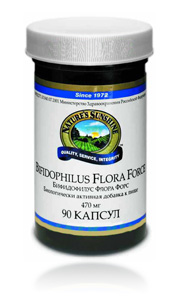
eplenished, the sooner they can begin to outnumber the colonies of candida.
Be sure that the
probiotic supplement you obtain has live cultures of Lactobacillus acidophilus (helps to fight candida in the upper intestinal tract), as well as Bifidobacterium longum (helps to fight candida in the large intestine). In addition, it should contain a pre-biotic substance called FOS (which stands for “fructo-oligosaccharides”). FOS is a type of soluble fiber that feeds and promotes the proliferation of Bifidobacterium, which then produces the short-chain fatty acids needed by our bodies to absorb and assimilate the nutrients in food and produce energy.
If you have taken any antibiotics within the last year, you will want to continue taking probiotic supplements for three to six months to fully restore a healthy population of intestinal flora. Probiotic supplements are best taken on an empty stomach before bed or first thing in the morning.
Step # 6 - Repair the “Leaky Gut”
When the lining of the intestinal wall is damaged from the roots and acids of candida overgrowth, steps must be taken to repair it. In addition to taking steps to eliminate candida so it no longer damages the intestinal lining, measures should be taken to avoid other intestinal irritants that contribute to a “leaky” gut.
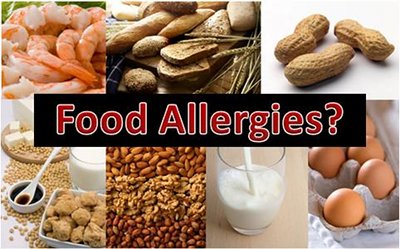 Remove Food Allergens
Remove Food Allergens: One significant cause of this type of damage is inflammation produced when allergy-producing foods are consumed and trigger an immune system response. Besides the fact that allergens become like toxins that create inflammation and weaken the immune system, eating an allergic food that cannot be properly digested can cause additional problems. For instance, if a milk product that contains the sugar lactase is consumed, the undigested sugar becomes more fuel for the candida. To understand more about the importance of not eating foods to which you are allergic and how food allergens relate to leaky gut syndrome, I would encourage you to read my article
“Food Allergies – Could They Be Your Problem? – Part 3”. In this article, I explain more about leaky gut syndrome and how to eliminate some of the other factors related to intestinal irritation and increased permeability (i.e. holes in the gut).
Improve Digestion: Poor digestion is a major factor that contributes to leaky gut syndrome because anything that is not digested well tends to rot and decay, which then becomes the perfect food on which yeast can thrive. Plus any foods not sufficiently digested can generate damaging acids and contribute to inflammation. To understand more about how to improve digestion, I would recommend that you read my articles
“The Key to Good Digestion” about the importance of taking digestive enzymes, and
“Digestion – It all Starts Here.”
Take a Quality Fiber Supplement: Fiber is another important element in healing a leaky gut. In order for tissues to be regenerated and repaired, it is essential to reduce inflammation. Fiber helps to bind intestinal toxins and protect the colon from irritating substances. At the sa
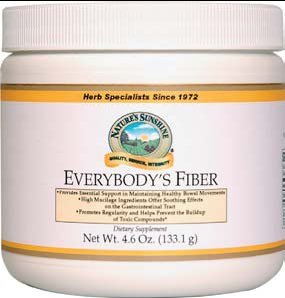
me time, it promotes healthy elimination to ensure that toxins are not reabsorbed. Fiber also helps to maintain a balanced pH and creates an environment where probiotics thrive and grow.
A fiber supplement that contains soluble fiber, FOS and herbs that soothe and build the digestive tract is ideal for helping to repair a leaky gut.
The following supplements are also helpful for healing and repairing a leaky gut:
- Uña de Gato (or Cat’s Claw) – is an excellent herb to take for candida and intestinal inflammation because it has both strong anti-microbial and anti-inflammatory properties. The alkaloids in Uña de Gato significantly enhance the ability of white blood cell to attack, engulf, and digest harmful microbes, making it a powerful booster to the immune system.
- L Glutamine – is an amino acid that is the primary energy source for the cells that line the intestinal tract as well as the brain. Its principal function is to support cellular growth, energy and repair. Studies show that glutamine levels are often depleted in those with a yeast overgrowth, which may account for the “brain fog” often experienced in those individuals. L Glutamine is best taken on an empty stomach.
Concluding Thoughts
Freedom from the symptoms and effects of Candida is well worth the effort, expense and discipline it takes to both implement the diet and lifestyle changes and take the supplements needed to successfully conquer this challenging condition. One benefit that many people enjoy is that they are able to lose weight they were never able to shed before. Having the right balance of intestinal flora and healing up a leaky gut also strengthens the immune system and keeps a person from suffering from repeated infections and gastrointestinal distress. Greater energy, improved mood and the ability to think more clearly are just some of the other benefits people experience once their body has returned to a healthy balance.
If you would like additional information on how to implement the recommendations made in this article or would like to receive a self-grading questionnaire and instructions on performing a simple home saliva test to better determine if you might be dealing with an overgrowth of candida, please e-mail me at
lucinda@myfrienddebbie.com. I also can point you in the right direction with regards to types of laboratory tests that are available for detecting Candida or leaky gut syndrome. I am glad to share this and other informational resources with you if you need further guidance in dealing with this health issue
Copyright © 2008-2011 Lucinda Bedogne, CNHP



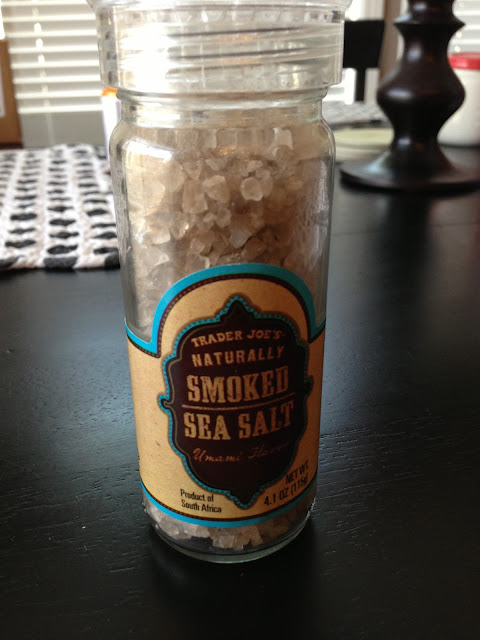




 itions that persistently plague people today. Who would ever imagine that digestive disturbances, chronic fatigue, skin rashes, brain fog, food cravings, depression, and the inability to lose weight (to name a few) could all stem from a single microscopic organism that commonly lives within each of us?
itions that persistently plague people today. Who would ever imagine that digestive disturbances, chronic fatigue, skin rashes, brain fog, food cravings, depression, and the inability to lose weight (to name a few) could all stem from a single microscopic organism that commonly lives within each of us? ngus that feeds off the nutrients in the digestive system and bloodstream of its host.
ngus that feeds off the nutrients in the digestive system and bloodstream of its host. Candida, sugars and starches in the diet (that rapidly break down into sugar in the digestive process) fuel the overgrowth of this yeast/fungal organism.
Candida, sugars and starches in the diet (that rapidly break down into sugar in the digestive process) fuel the overgrowth of this yeast/fungal organism.
 at may take care of the symptoms but do not thoroughly address the root causes of the yeast overgrowth.
at may take care of the symptoms but do not thoroughly address the root causes of the yeast overgrowth.  systemic (system-wide) effects. Once other parts of the body are exposed to the toxic effects of Candidiasis, a person’s health may be negatively impacted in numerous ways. Although it is somewhat rare, Candida that enters the bloodstream can even develop into a life-threatening disease known as Candidemia. This condition is the fourth most common bloodstream infection among hospitalized patients in the United States.
systemic (system-wide) effects. Once other parts of the body are exposed to the toxic effects of Candidiasis, a person’s health may be negatively impacted in numerous ways. Although it is somewhat rare, Candida that enters the bloodstream can even develop into a life-threatening disease known as Candidemia. This condition is the fourth most common bloodstream infection among hospitalized patients in the United States. the amount of fuel available to the yeast are sugar (or anything that turns to sugar, i.e. starches and refined carbohydrates) and anything fermented or that contains yeast, mold or fungus. It must be kept in mind that sugar not only fuels the growth of Candida but it also helps it adhere to the intestinal lining as it is digested.
the amount of fuel available to the yeast are sugar (or anything that turns to sugar, i.e. starches and refined carbohydrates) and anything fermented or that contains yeast, mold or fungus. It must be kept in mind that sugar not only fuels the growth of Candida but it also helps it adhere to the intestinal lining as it is digested.  products and other hidden ingredients – additives and preservatives (such as citric acid) should be avoided
products and other hidden ingredients – additives and preservatives (such as citric acid) should be avoided etc. as well as all dried and canned fruit
etc. as well as all dried and canned fruit  ons and garlic are very good natural anti-fungals).
ons and garlic are very good natural anti-fungals). ha and unpasteurized apple cider vinegar
ha and unpasteurized apple cider vinegar As time goes on and symptoms improve, food items such as low-sugar fruits (grapefruit, berries, etc.) and high-protein non-gluten grains (amaranth, quinoa, etc.) could gradually be added back into the diet. After symptoms have cleared up, most everything except foods high in sugar and highly processed foods may be added back.
As time goes on and symptoms improve, food items such as low-sugar fruits (grapefruit, berries, etc.) and high-protein non-gluten grains (amaranth, quinoa, etc.) could gradually be added back into the diet. After symptoms have cleared up, most everything except foods high in sugar and highly processed foods may be added back. one of the most powerful natural compounds for eliminating an overgrowth of yeast.
one of the most powerful natural compounds for eliminating an overgrowth of yeast.

 eplenished, the sooner they can begin to outnumber the colonies of candida.
eplenished, the sooner they can begin to outnumber the colonies of candida. 
 me time, it promotes healthy elimination to ensure that toxins are not reabsorbed. Fiber also helps to maintain a balanced pH and creates an environment where probiotics thrive and grow.
me time, it promotes healthy elimination to ensure that toxins are not reabsorbed. Fiber also helps to maintain a balanced pH and creates an environment where probiotics thrive and grow.